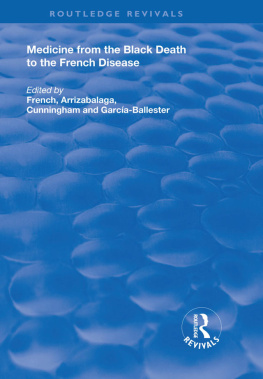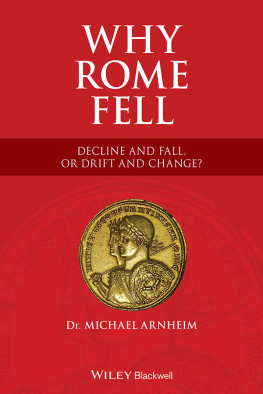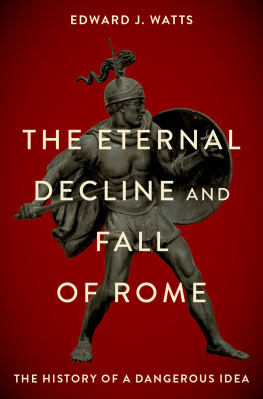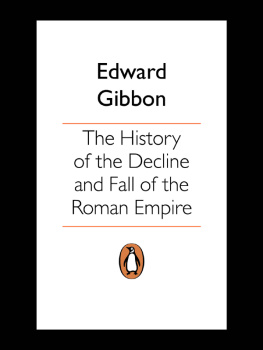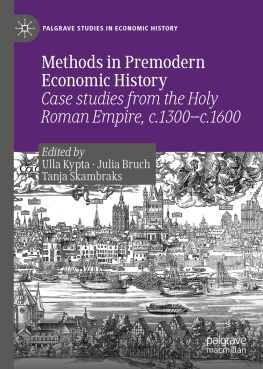Towns in Decline, AD 1001600
TOWNS IN DECLINE AD 1001600
Edited by
T.R. SLATER
First published 2000 by Ashgate Publishing
Published 2017 by Routledge
2 Park Square, Milton Park, Abingdon, Oxon OX14 4RN
711 Third Avenue, New York, NY 10017, USA
Routledge is an imprint of the Taylor & Francis Group, an informa business
Copyright Terry Slater and the contributors 2000
The editors and contributors have asserted their moral rights under the Copyright, Designs and Patents Act, 1989, to be identified as the editors/authors of this work.
All rights reserved. No part of this book may be reprinted or reproduced or utilised in any form or by any electronic, mechanical, or other means, now known or hereafter invented, including photocopying and recording, or in any information storage or retrieval system, without permission in writing from the publishers.
Notice:
Product or corporate names may be trademarks or registered trademarks, and are used only for identification and explanation without intent to infringe.
British Library Catalogueing in Publication Data
Slater, Terry
Towns in Decline, AD 1001600
1. Cities and Towns, Ancient Europe 2. Cities and Towns, Medieval Europe 3. Civilization, Ancient 4. Civilization, Medieval
I. Title
307.76094
US Library of Congress Cataloging-in-Publication Data
Towns in Decline, AD 1001600 / edited by T.R. Slater.
p. cm. Includes bibliographical references and index.
1. Cities and townsEuropeHistoryCongresses. I. Slater, T.R.
HT131 .T68 2000
307.76094dc21
99056585
CIP
ISBN 13: 978-0-7546-0084-8 (hbk)
Typeset in Times New Roman by Password, Norwich, UK.
Contents
T.R. Slater and James P.P. Higgins
Neil Faulkner
Neil Christie
S.T. Loseby
Roger White
R.A. Hall
Peter Csendes
Howard B. Clarke
Kenneth Murphy
Grenville Astill
Keith D. Lilley
Alan Dyer
Samuel K. Cohn
Professor Grenville Astill is Professor of Archaeology in the Department of Archaeology of the University of Reading.
Dr Neil Christie is Lecturer in Archaeology in the School of Archaeological Studies of the University of Leicester.
Dr Howard Clarke is Senior Lecturer in Medieval History in the Combined Departments of History of University College, Dublin.
Professor Samuel Cohn, Jnr is Professor of History in the Department of Medieval History of the University of Glasgow.
Professor Dr Peter Csendes is Deputy Director of the Vienna Municipal and Provincial Archives.
Dr Alan Dyer is Senior Lecturer in the School of History and Welsh History, University of Wales, Bangor.
Dr Neil Faulkner is Honorary Research Fellow in the Institute of Archaeology, University College, London..
Dr Richard Hall is Deputy Director of York Archaeological Trust.
Dr Keith Lilley is Lecturer in Human Geography in the School of Geo-Sciences of The Queens University of Belfast.
Dr Simon Loseby is Lecturer in History in the Department of History of the University of Sheffield.
Kenneth Murphy is an archaeologist with the Dyfed Archaeological Trust Ltd.
Dr Terry Slater is Reader in Historical Geography in the School of Geography and Environmental Sciences of the University of Birmingham.
Dr Roger White is Research Fellow in the Field Archaeology Unit in the Department of Ancient History and Archaeology of the University of Birmingham.
This volume derives from one of a series of inter-disciplinary conferences on aspects of European urbanism between AD 100 and AD 1600, which were held every two years or so through the late 1980s and 1990s in the University of Birmingham. They brought together archaeologists, economic, social and architectural historians, and historical geographers with interests in urbanism over the period from Roman times to the beginnings of the Early-Modern period. Each conference had a particular theme and always included perspectives from invited European scholars of distinction.
It was intended that the proceedings of each conference should be published, but this is only the second to reach publication; the first was the widely praised Death in Towns, edited by Steven Bassett and published in 1992. That says something of the difficulties of getting collected essays properly edited for the press, when university academics are so busy with a multiplicity of teaching, administrative and writing tasks. Inevitably, some authors in this volume drafted chapters more quickly than others and, though some contributors have continued to add references and change texts in the intervening period, not all have been able to do so. In the fast-changing world of archaeology, where new excavations or newly published reports can transform interpretations of evidence very quickly, delays of this kind can be especially unfortunate. Such publication delays do not reflect the lack of any mutual respect or friendship between the three perspectives brought to these conferences by the organisers and participants. Indeed, without that genuine collegiality to be found in the Arts building of the University of Birmingham between the departments of antiquity, medieval history and geography, I doubt that either conferences or book would have reached fruition. I am grateful, therefore, for the support of Professor Christopher Dyer, FBA, in the Department of Medieval History, and Dr Simon Esmonde-Cleary, in the Department of Ancient History and Archaeology, in organising these conferences. The organising group for the Urban Decline conference, held in April, 1996, included Dr Nigel Baker, Dr Steven Bassett, Dr Richard Holt and Dr Keith Lilley. I am especially grateful for the assistance of the latter in the detailed administration of the conference. He was ably assisted by Dr James Higgins and Malcolm Horne. The conference was, as always, marked by vigorous discussion of themes, both in the conference sessions, and in the social gatherings between times. Most chapters have benefited from that discussion immeasurably. Two of the papers given at the conference do not appear in this book. One of them, sadly, is the plenary paper, which opened the conference, given by Professor Dr Dietrich Denecke of the Insititute of Geography at the University of Gttingen, Germany. His well-structured and very wide-ranging paper on processes of decline and stagnation in the towns of central Europe, over the whole time period, led to a vigorous and lengthy discussion which set the scene for themes which were to be revisited over the next two days. His contribution should not, therefore, go unacknowledged. Finally, The Historical Geography Research Group of the Royal Geographical Society (with the Institute of British Geographers) provided financial support for the conference to enable young researchers to attend at reduced cost.
In the production of the book I have drawn heavily upon the technical services of the School of Geography and Environmental Sciences. I am grateful to Professor P.W. Daniels and Professor G.E. Petts, successively Heads of School during the editing period for permission to do so. I am grateful to Geoff Dowling, ARPS, for photographic services, and to Kevin Burkhill and Ann Ankorn for cartographic services. Jamie Peart, Map Curator and Head of Technical Services in the School, was unfailingly helpful. At Ashgate Publishing Limited, Alec McAulay has been enthusiastic from the days of the conference to see the book into print and Kirsten Weissenberg has been a model of efficiency in her role as publishing editor. Penny Simmons of Password Publishing Services dealt effectively with the copy editing, and I am grateful for the assistance of James Dowden in compiling the Index.


